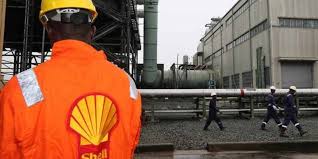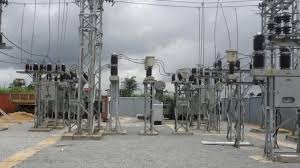Oil & Energy
Unveiling Of Crane: Energy Infrastructure Set To Get Boost

Energy infrastructure, a crucial part of global oil and gas supply and the energy transition, are set to get a boost after a heavy lifting equipment provider unveiled the world’s strongest crane-equipment capable of lifting 6,000 tons, or 15 fully loaded Boeing 747 aircraft.
Dutch heavy lifting and transport services company Mammoet has launched a new type of crane, the SK6,000, which, the firm said, could be used for modules to be built faster and also “bigger than ever before”.
As oil and gas continue to be a key part of the world’s energy system—and likely will continue for decades to come—and as renewable energy developers aim for bigger wind turbines, the support equipment for installing oil and gas platforms, offshore wind equipment, and even nuclear power stations is becoming bigger.
Bigger cranes such Mammoet’s SK6,000 could remove some of the limitations of engineering and construction firms. These firms are generally limited by how much weight can be lifted when installed on a platform or turbine.
Cranes that can carry 5,000 tons and more can shorten the time of a project being erected on a site, onshore or offshore, Mammoet says.
“Limitations on lifting capacity force engineers to fabricate smaller modules than would be optimal; tying up site space and increasing the complexity and duration of projects,” the company notes.
“This limitation can also narrow the execution choices available during each project’s planning stage and the percentage of each project that can be executed locally.”
These days, energy companies and their contractors seek faster deployment of energy infrastructure, be it wind turbines or floating production storage and offloading (FPSO) vessels and platforms for oil and gas production.
“There are so many supply chain constraints at the moment that need to be de-bottlenecked,” Gavin Kerr, Mammoet’s director of global services, told Bloomberg, commenting on the new crane.
“The bigger everything gets, you need bigger cranes.”
Moreover, the SK6,000 is containerised and can be assembled quickly on-site. This feature allows it to deliver heavy lift capability wherever it is needed, giving contractors greater flexibility in where and how energy projects are completed” Mammoet said.
“With the innovation of the SK6,000 crane, our customers can think bigger than ever before; pushing modules beyond the 4,000t and even 5,000t barriers. Its low ground bearing capacity also means the crane can be used all over the world”, said Mammoet’s Sales Director Giovanni Alders.
“With its long outreach, small minimum footprint and relatively small site impact, the SK6,000 greatly reduces the topside integration time.
“Needless to say, with larger building blocks you spend less time connecting and testing, and more time producing” Alders added
Energy companies do need faster permit-to-production times in both oil and gas and renewable energy to provide the conventional and green energy sources the world will need.
Wind turbine technology is evolving and making the hub height increasingly taller. According to the Office of Energy Efficiency & Renewable Energy at the U.S. Department of Energy, the hub height for utility-scale land-based wind turbines has surged by 83per cent since 1998–1999, to about 103.4 meters (339 feet) in 2023. That’s taller than the statue of Liberty.
The average hub height for offshore wind turbines in the United States is projected to grow even taller from 100 meters (330 feet) in 2016 to about 150 meters (500 feet), or about the height of the Washington Monument, in 2035, DOE said.
In the oil and gas industry, new resource development is needed as demand for LNG grows and legacy oilfields mature and output declines.
If contractors can bring energy projects on stream faster, both oil and gas supply and the energy transition will benefit.
By: Charles Kennedy
Oil & Energy
Nigeria Loses More Crude Oil Than Some OPEC Members – Nwoko

Nigeria’s losses due to crude oil theft has been said to be more significant than those of some other members of the Organisation of Petroleum Exporting Countries(OPEC).
The Chairman, Senate Ad- hoc Committee on Crude Oil Theft, Senator Ned Nwoko, made this known in an interview with newsmen in Abuja.
Nwoko noted with dismay the detrimental impact of the issue, which, he said include economic damage, environmental destruction, and its impact on host communities.
According to him, the theft was not only weakening the Naira, but also depriving the nation of vital revenue needed for infrastructure, healthcare, education and social development.
The Senator representing Delta North Senatorial District described the scale of the theft as staggering, with reports indicating losses of over 200,000 barrels per day.
Nwoko disclosed that the ad hoc committee on Crude Oil Theft, which he chairs, recently had a two-day public hearing on the rampant theft of crude oil through illegal bunkering, pipeline vandalism, and the systemic gaps in the regulation and surveillance of the nation’s petroleum resources.
According to him, the public hearing was a pivotal step in addressing one of the most pressing challenges facing the nation.
‘’Nigeria loses billions of dollars annually to crude oil theft. This is severely undermining our economy, weakening the Naira and depriving the nation of vital revenue needed for infrastructure, healthcare, education, and social development.
‘’The scale of this theft is staggering, with reports indicating losses of over 200,000 barrels per day more than some OPEC member nations produce.
‘’This criminal enterprise fuels corruption, funds illegal activities and devastates our environment through spills and pollution.
‘’The public hearing was not just another talk shop; it was a decisive platform to uncover the root causes of crude oil theft, bunkering and pipeline vandalism.
‘’It was a platform to evaluate the effectiveness of existing surveillance, monitoring, and enforcement mechanisms; Identify regulatory and legislative gaps that enable these crimes to thrive.
‘’It was also to engage stakeholders, security agencies, host communities, oil companies, regulators, and experts to proffer actionable solutions; and strengthen legal frameworks to ensure stricter penalties and more efficient prosecution of offenders”, he said.
Nwoko noted that Nigeria’s survival depended
Oil & Energy
Tap Into Offshore Oil, Gas Opportunities, SNEPCO Urges Companies

Shell Nigeria Exploration and Production Company Ltd. (SNEPCo) has called on Nigerian companies to position themselves strategically to take full advantage of the growing opportunities in upcoming offshore and shallow water oil and gas projects.
The Managing Director, SNEPCO, Ronald Adams, made the call at the 5th Nigerian Oil and Gas Opportunity Fair (NOGOF) Conference, held in Yenagoa, Bayelsa State, last Thursday.
Adams highlighted the major projects, including Bonga Southwest Aparo, Bonga North, and the Bonga Main Life Extension, as key areas where Nigerian businesses can grow their capacity and increase their involvement.
“Shell Nigeria Exploration and Production Company Ltd. (SNEPCo) says Nigerian companies have a lot to benefit if they are prepared to take advantage of more opportunities in its offshore and shallow water oil and gas projects.
“Projects such as Bonga Southwest Aparo, Bonga North and Bonga Main Life Extension could grow Nigerian businesses and improve their expertise if they applied themselves seriously to executing higher value contracts”, Adams stated.
Adams noted that SNEPCo pioneered Nigeria’s deepwater oil exploration with the Bonga development and has since played a key role in growing local industry capacity.
He emphasized that Nigerian businesses could expand in key areas like logistics, drilling, and the construction of vital equipment such as subsea systems, mooring units, and gas processing facilities.
The SNEPCO boss explained that since production began at the Bonga field in 2005, SNEPCo has worked closely with Nigerian contractors to build systems and develop a skilled workforce capable of delivering projects safely, on time, and within budget both in Nigeria and across West Africa.
According to him, this long-term support has enabled local firms to take on key roles in managing the Bonga Floating, Production, Storage and Offloading (FPSO) vessel, which reached a major milestone by producing its one-billion barrel of oil on February 3, 2023.
Oil & Energy
Administrator Assures Community Of Improved Power Supply

The Emohua Local Government Area Administrator, Franklin Ajinwo, has pledged to improve electricity distribution in Oduoha Ogbakiri and its environs.
Ajinwo made the pledge recently while playing host in a courtesy visit to the Oduoha Ogbakiri Wezina Council of Chiefs, in his office in Rumuakunde.
He stated that arrangements are underway to enhance available power, reduce frequent outages, and promote steady electricity supply.
The move, he said, was aimed at boosting small and medium-scale businesses in the area.
“The essence of power is not just to have light at night. It’s for those who can use it to enhance their businesses”, he said.
The Administrator, who commended the peaceful nature of Ogbakiri people, urged the Chiefs to continue in promoting peace and stability, saying “meaningful development can only thrive in a peaceful environment”.
He also charged the Chiefs to protect existing infrastructure while promising to address the challenges faced by the community.
Earlier, the Oduoha Ogbakiri Wezina Council of Chiefs, led by HRH Eze Goodluck Mekwa Eleni Ekenta XV, expressed gratitude to the Administrator over his appointment and pledged their support to his administration.
The chiefs highlighted challenges facing the community to include incessant power outage, need for new transformers, and the completion of Community Secondary School, Oduoha.
The visit underscored the community’s expectations from the LGA administration.
With Ajinwo’s assurance of enhancing electricity distribution and promoting development, the people of Oduoha Ogbakiri said they look forward to a brighter future.
By: King Onunwor

